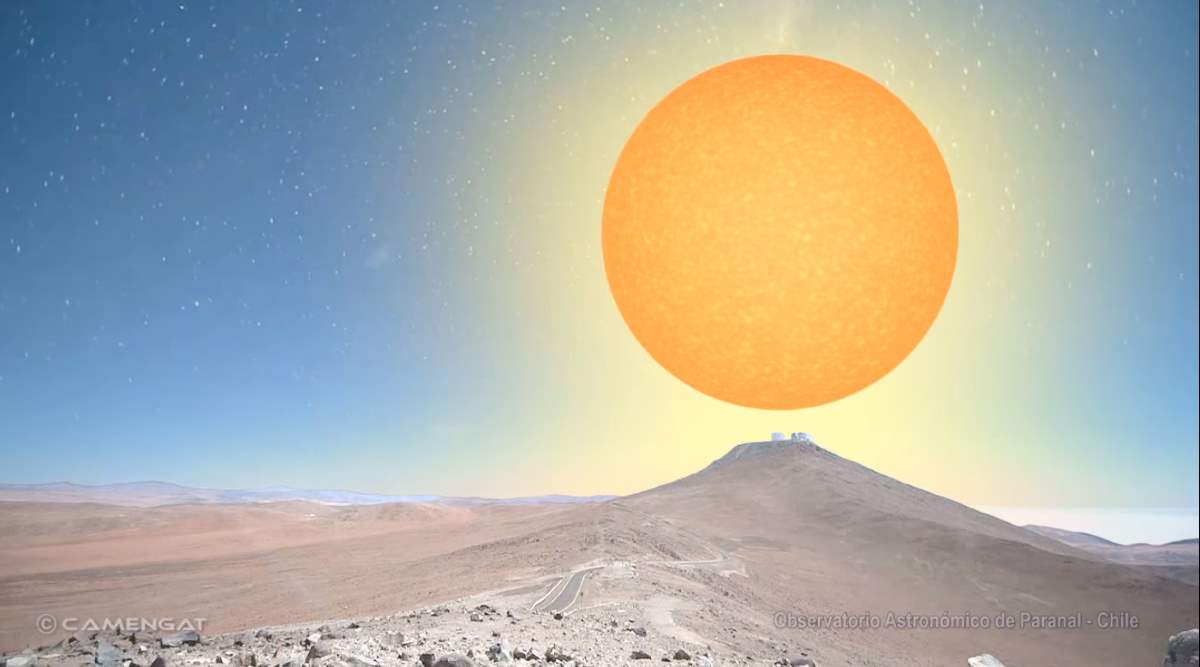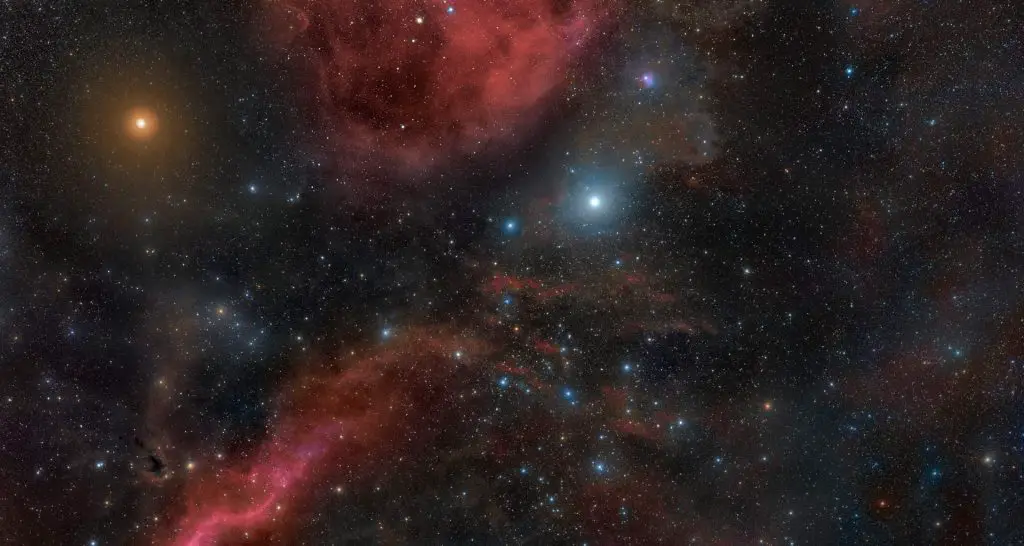The Sun is the primary source of energy for Earth’s climate system, and life on Earth. With a diameter of about 1.39 million kilometers (864,337 miles, i.e. 109 times that of Earth), and a mass of about 1.9885×1030 kg (330,000 times that of Earth, accounting for about 99.86% of the total mass of the Solar System), it may be the biggest thing in this neighborhood, but it is actually just a medium-sized star among the hundreds of billions of stars in the Milky Way galaxy.
In the video published by the CAMENGAT creative astronomy below, you can see some dwarf stars and other giants compared to the Sun at the edge of its sphere: at 150 million kilometers (1 AU, see notes 1) with a 50 mm objective. The stars are the Sun, Alpha Centauri A, Sirius, Vega, Pollux, Arcturus, Aldebaran, Rigel, Antares, and Betelgeuse. The scenario: Astronomical Observatory of Paranal, Chile.
The stars in the video:
- The Sun is classified as a G-type main-sequence star, or G dwarf star, or more imprecisely, a yellow dwarf. Actually, the Sun, like other G-type stars, is white but appears yellow through Earth’s atmosphere. The Sun does not have enough mass to explode as a supernova. Instead, it will exit the main sequence in approximately 5 billion years and start to turn into a red giant. As a red giant, the Sun will grow so large that it will engulf Mercury, Venus, and probably Earth. Even before it becomes a red giant, the luminosity of the Sun will have nearly doubled, and Earth will receive as much sunlight as Venus receives today.
- Alpha Centauri binary star system (α Cen), the closest star system to the Solar System at a distance of 4.37 light-years. It consists of three stars: the pair Alpha Centauri A and Alpha Centauri B and a small and faint red dwarf, Proxima Centauri, that may be gravitationally bound to the other two. To the unaided eye, the two main components appear as a single object of an apparent visual magnitude of -0.27, forming the brightest star in the southern constellation Centaurus and the third brightest star in the night sky, outshone only by Sirius and Canopus. Alpha Centauri A is the principal member, or primary, of the Alpha Centauri system with a diameter of about 1.70 million kilometers (1.22 times that of Sun), it is slightly larger and more luminous than the Sun. It is also about 10 percent more massive.
- Sirius is a star system and Sirius A is the brightest star in the Earth’s night sky – twice as bright as Canopus, the next brightest star. Its diameter is about 2 million kilometers (1.44 times that of the Sun). Although white to blue-white in color, Sirius might be called a rainbow star, as it often flickers with many colors. The brightness, twinkling, and changes in color sometimes prompt first-time observers to report Sirius as a UFO.
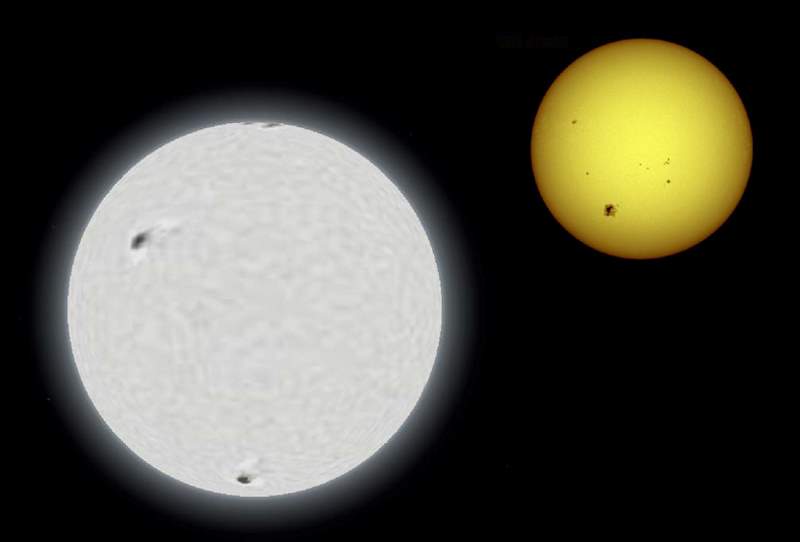
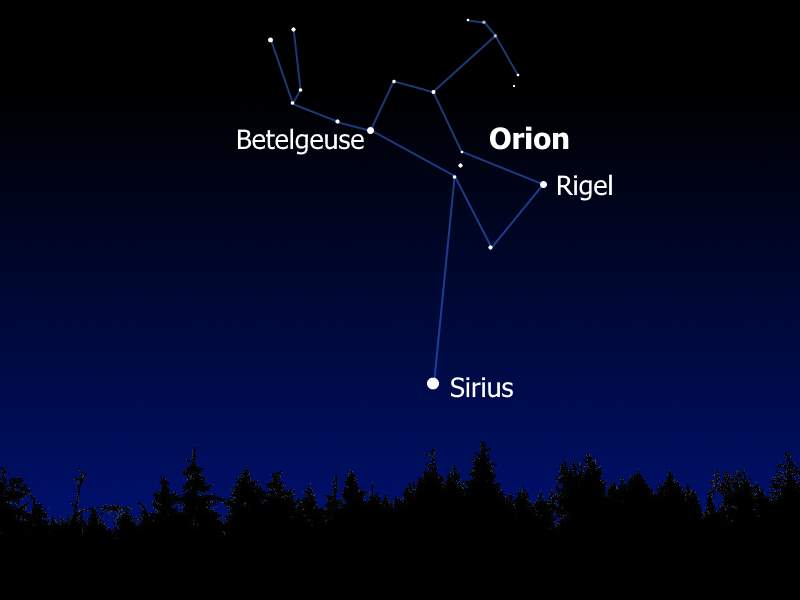
- Relatively close at only 25 light-years from the Sun, Vega, together with Arcturus and Sirius, one of the most luminous stars in the Sun’s neighborhood. It has a diameter of about 4 million kilometers (2.88 times that of the Sun). Vega is only about a tenth of the age of the Sun, but since it is 2.1 times as massive its expected lifetime is also one-tenth of that of the Sun; both stars are at present approaching the midpoint of their life expectancies.
- Pollux, also designated Beta Geminorum is an orange-hued evolved giant star approximately 34 light-years from the Sun in the northern constellation of Gemini. It is the closest giant star to the Sun. Since 1943, the spectrum of this star has served as one of the stable anchor points by which other stars are classified. In 2006, an extrasolar planet (designated Pollux
b or β Gem b, later named Thestias) was confirmed to be orbiting it. It has a diameter of about 12 million kilometers (8.63 times that of the Sun). Arcturus , also designated Alpha Boötis (in the video it is written as Arturo, which is Spanish of Arcturus) is a relatively close Orange Giant at 36.7 light-years from the Sun. Arcturus is the brightest star in the Northern celestial hemisphere and the fourth brightest star in the night sky, after Sirius (-1.46 apparent magnitude), Canopus (-0.86), and Alpha Centauri (-0.27). However, Alpha Centauri is a binary star, whose unresolved components to the naked eye are both fainter than Arcturus. This makes Arcturus the third-brightest individual star, just ahead of Alpha Centauri A, whose apparent magnitude is -0.01. It has a diameter of about 35.34 million kilometers (25.43 times that of the Sun).
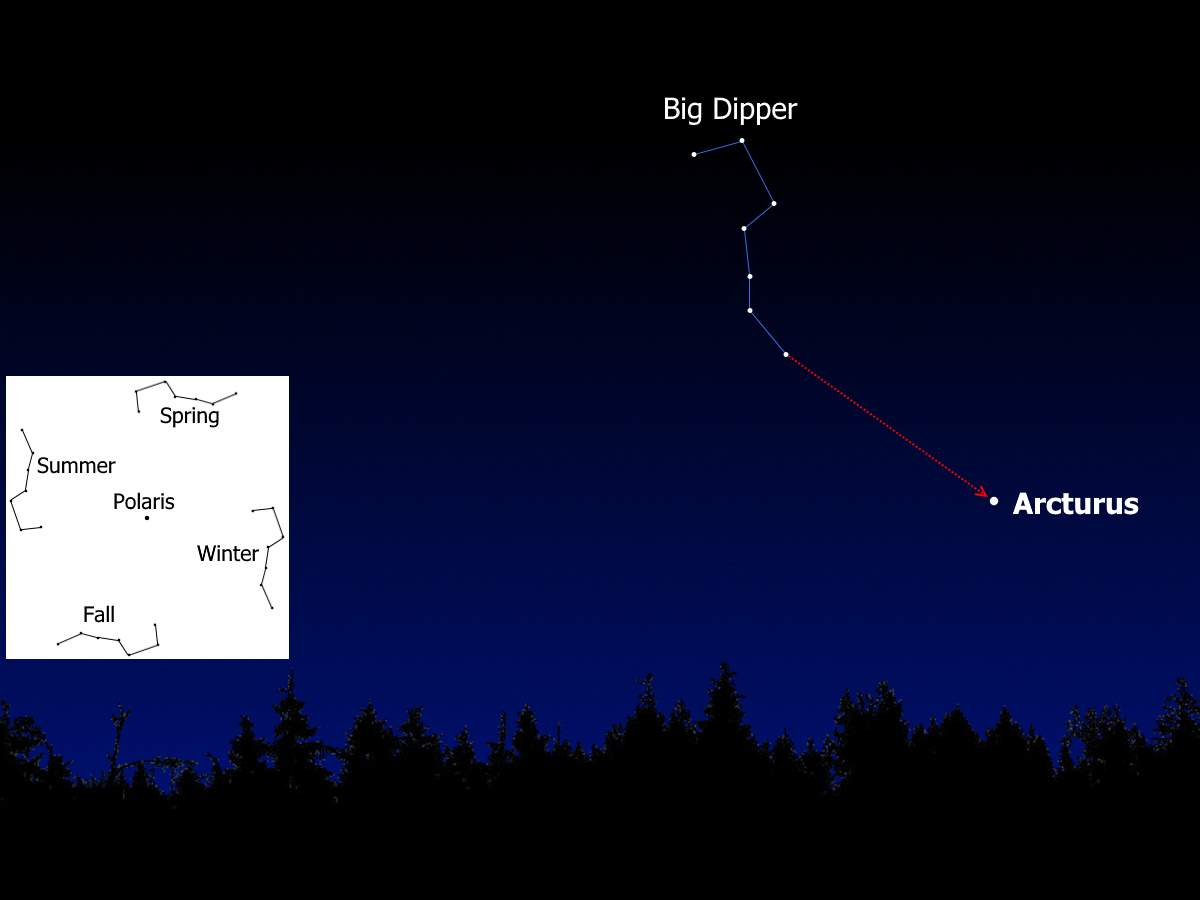
- Aldebaran, designated Alpha Tauri is an orange giant star located about 65 light-years from the Sun in the zodiac constellation of Taurus. It is the brightest star in its constellation and usually the fourteenth-brightest star in the nighttime sky. Pioneer 10 is currently heading in the general direction of the star and should make its closest approach in about two million years. Aldebaran has a diameter of about 61 million kilometers (43.88 times that of the Sun).
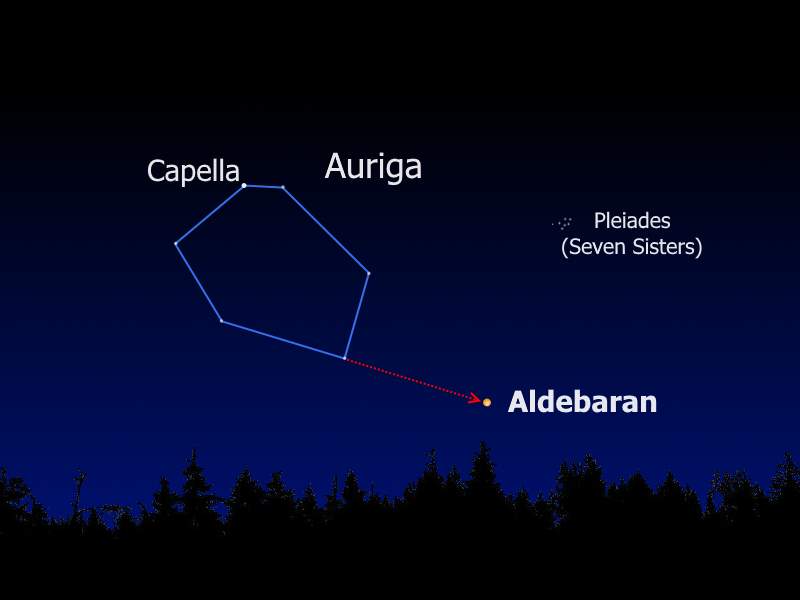
- Rigel, also designated Beta Orionis is generally the seventh-brightest star in the night sky – it is actually a triple (or quadruple?) star system. Its primary star (Rigel A) is mentioned in the video, which is a blue-white supergiant that is estimated to be anywhere from 120,000 to 279,000 times as luminous as the Sun. Rigel has a diameter of about 109 million kilometers (78.42 times that of Sun).
- Antares, also known as Alpha Scorpii is the fifteenth-brightest star in the night sky; the brightest star in the constellation of Scorpius, and is often referred to as “the heart of the scorpion”. Its exact size remains uncertain, but, probably with a radius that is approximately 1 billion 228 million kilometers (883 times that of the Sun), it is one of largest stars, and if placed in the center of the Solar System, its outer surface would lie between the orbits of Mars and Jupiter. The mass is calculated to be around 12 times that of the Sun. It is also nearing the end of its life. Once there is no more fuel left to burn, the star will collapse and explode into a supernova.
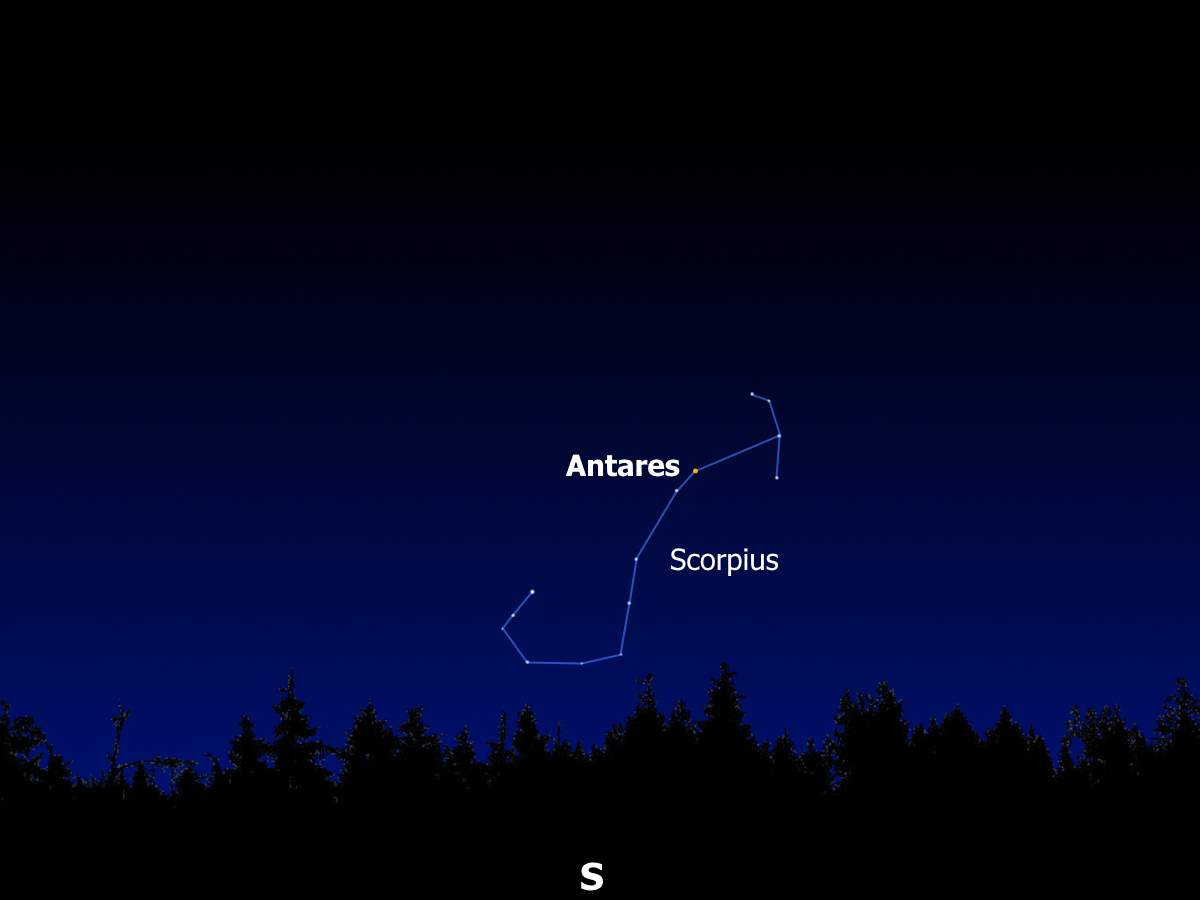
- Betelgeuse, also designated Alpha Orionis is a red supergiant and the ninth-brightest star in the night sky and second-brightest in the constellation of Orion. It has a diameter of about 1.642 billion kilometers (1,181 times that of the Sun). If Betelgeuse were at the center of the Solar System, its surface would extend past the asteroid belt, wholly engulfing the orbits of Mercury, Venus, Earth, Mars, and possibly Jupiter.
Notes
- An Astronomical Unit (AU) is the average distance between Earth and the Sun, which is about 93 million miles or 150 million kilometers.
Sources
- “How Big is the Sun? | Size of the Sun” on Space.com
- Sun on Wikipedia
- Red Dwarf on Wikipedia
- Alpha Centauri on Wikipedia
- Sirius on Wikipedia
- Sirius on earthsky.org
- Vega on Wikipedia
- Pollux on Wikipedia
- Arcturus on Wikipedia
- Follow Big Dipper’s arc to Arcturus on earthsky.org
- Aldebaran on Wikipedia
- Rigel on Wikipedia
- “Antares: Red Star at the End of Its Life” on Space.com
- Antares on Wikipedia
- Betelgeuse on Wikipedia
- Moon Landings: All-Time List [1966-2025] - February 2, 2025
- What Is Max-Q and Why Is It Important During Rocket Launches? - January 16, 2025
- Top 10 Tallest Rockets Ever Launched [2025 Update] - January 16, 2025
